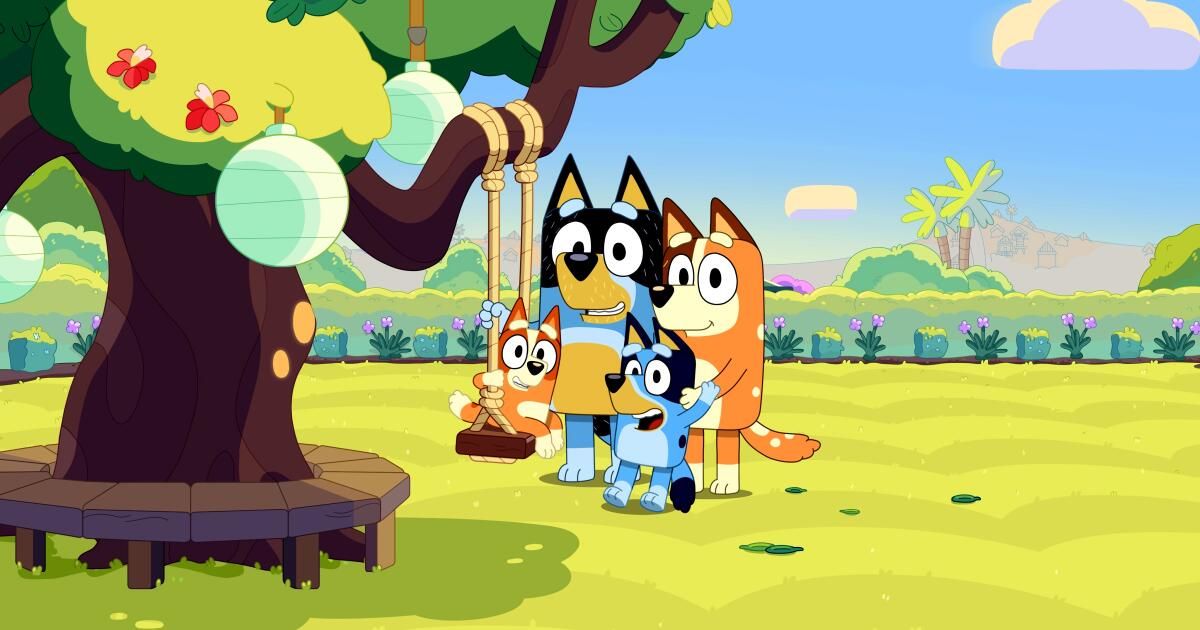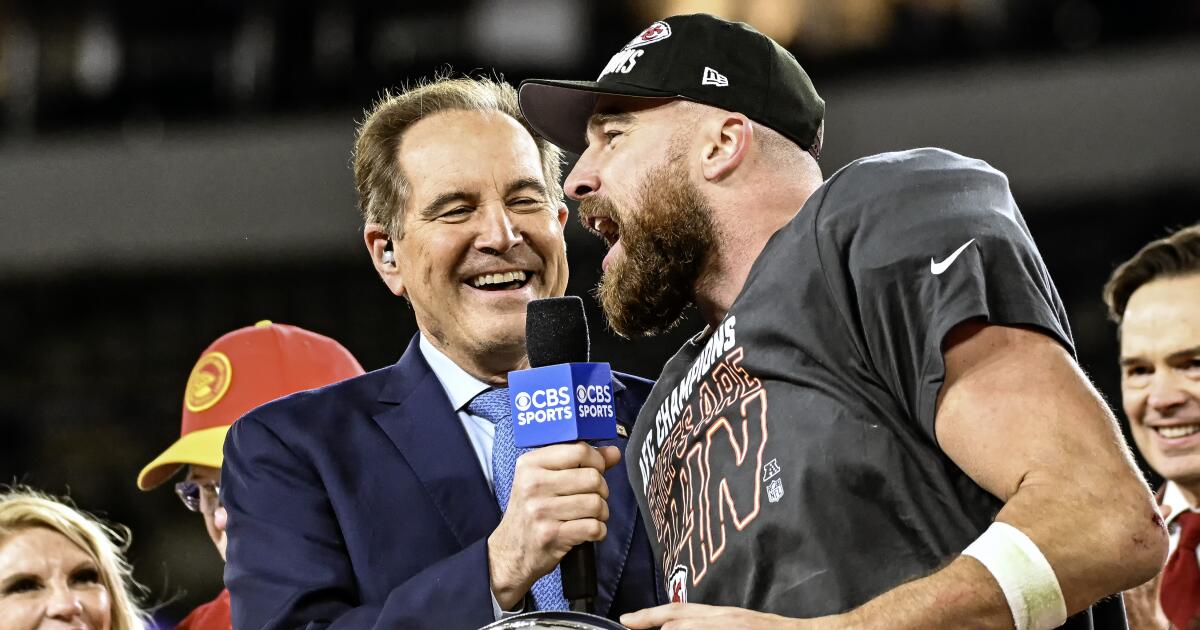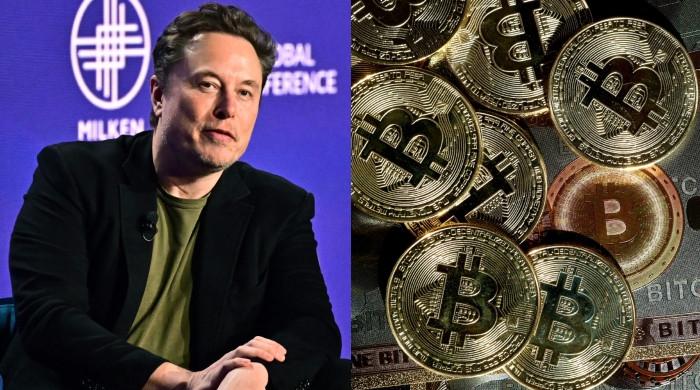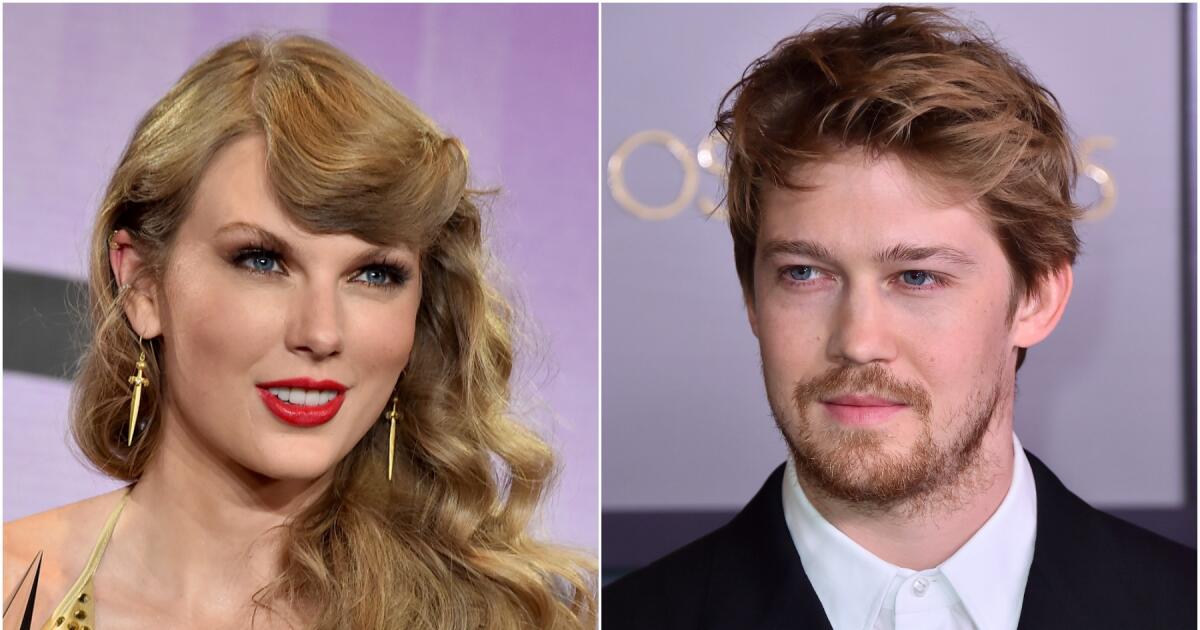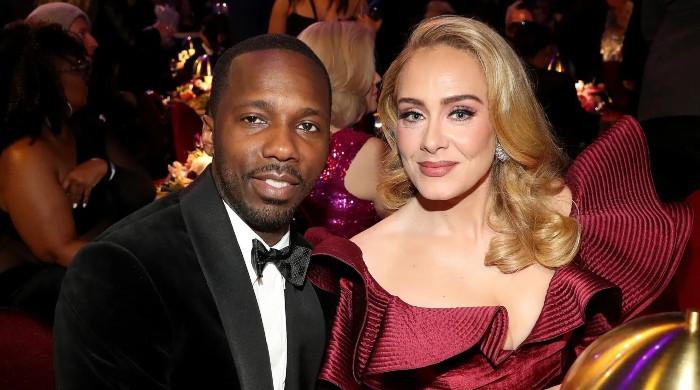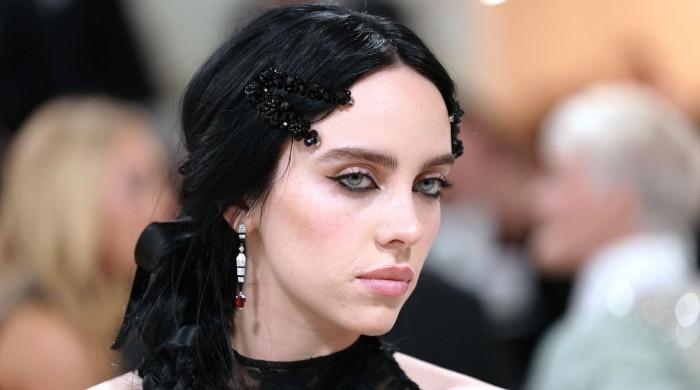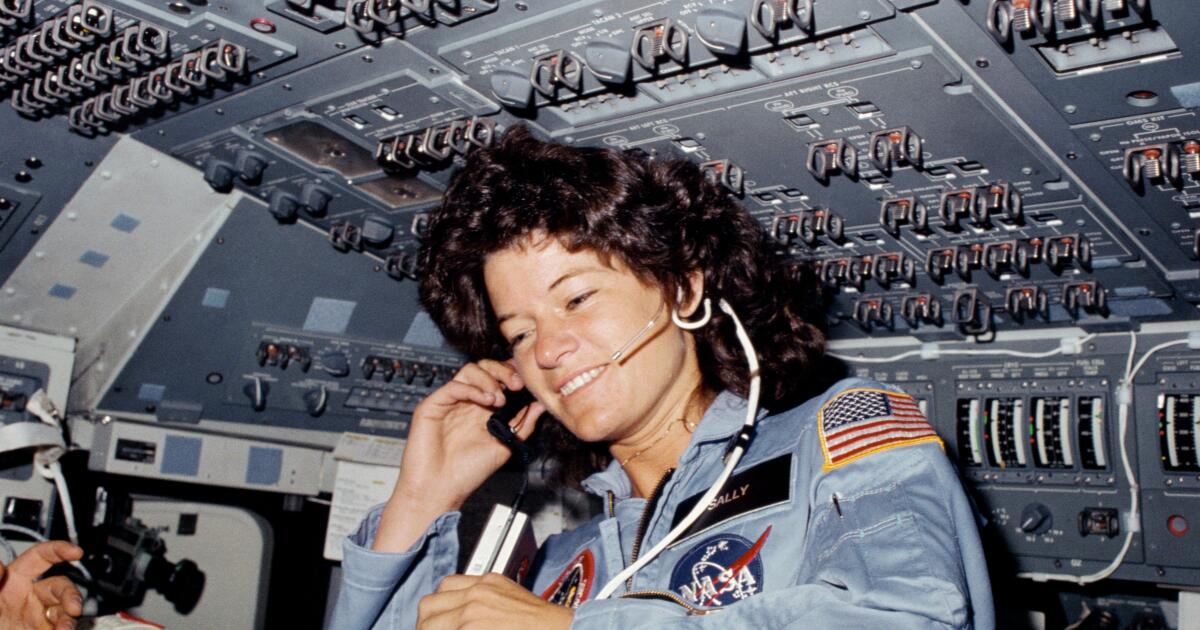This article contains spoilers for the “Bluey” episode “The Sign.”
Everyone's favorite family of Aussie dogs is becoming giant.
“The Sign,” a highly anticipated 28-minute special episode of “Bluey,” is now streaming on Disney+. While a typical “Bluey” episode lasts around seven minutes, “The Sign” is the equivalent of a two-hour movie in the “Bluey” universe.
“We always said it would be amazing if we could do three seasons and a movie,” says executive producer Daley Pearson. “We'd love to go beyond that, but wouldn't that be an Everest to climb? I think this is one version of the fulfillment of that promise. “It was such a creative challenge that we had to do it.”
“Bluey,” produced in Brisbane, Australia, by Ludo Studio (which Pearson co-founded) typically features four different animation teams working on individual episodes. For “The Sign,” all four teams collaborated. “This is the first episode done by the entire studio,” says Pearson. “That was a big production challenge in itself.”
1
2
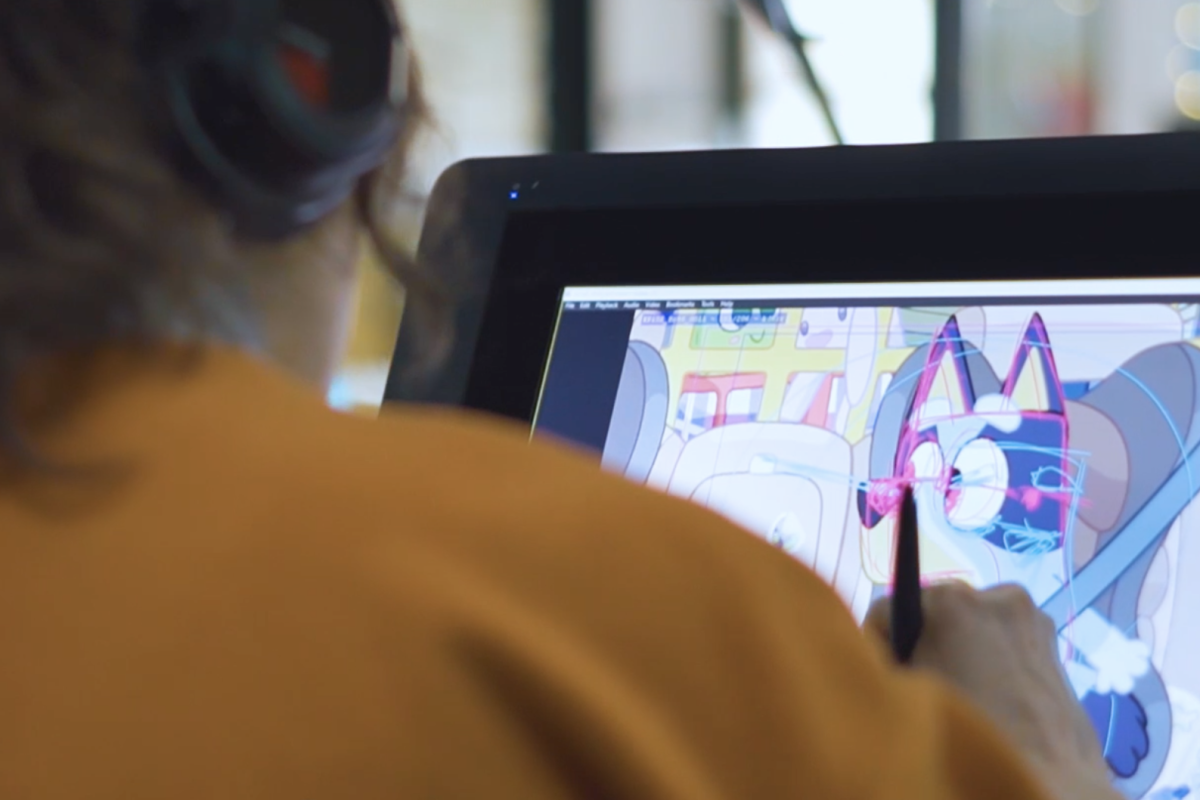
1. An artist at Ludo Studio. (Anthony Pham) 2. A rendition of “Bluey.” (Ludo Studio)
Since the program's inception, Pearson says, it has taken risks. He cites episodes like “Sleepytime” from the second season, which takes Bingo, Bluey's younger sister, on a dreamy night trip, and “Flat Pack,” which is about furniture assembly but also about evolution. “There were always these traditional 'Bluey' episodes, but there were also these avant-garde episodes,” she says.
“The Sign” is the pinnacle of that.
“It's an episode about very important things that these characters are going through,” Pearson says. “It's probably the biggest possible change these characters have ever gone through. It has a bit of an experimental feel to it. It will work? Will the public remain firm? And I think it's one of the most beautiful episodes we've done.”
The episode, which was written by series creator Joe Brumm, finds Bluey, Bingo and their parents Chilli (Melanie Zanetti) and Bandit (Dave McCormack) preparing for the wedding of Bandit's brother Rad (Patrick Brammall) and the Bluey's godmother, Frisky (Claudia O'). Doherty), two characters who first met in season 2's “Double Babysitter.” The episode's title refers to the “For Sale” sign in front of Heeler's house. Because of Bandit's new job, they are selling his house and moving, something that Bluey, in particular, is not happy about. And although Chilli tries to be supportive, it's clear that she doesn't want to move either.
“These parents are having to face these important life decisions, but they're also putting on a brave face for their kids,” Zanetti says. “And the moment we see the vulnerability between mom and dad, it's those moments as a child when you start to realize that your parents are just people or dogs, fallible and very human/canine.”
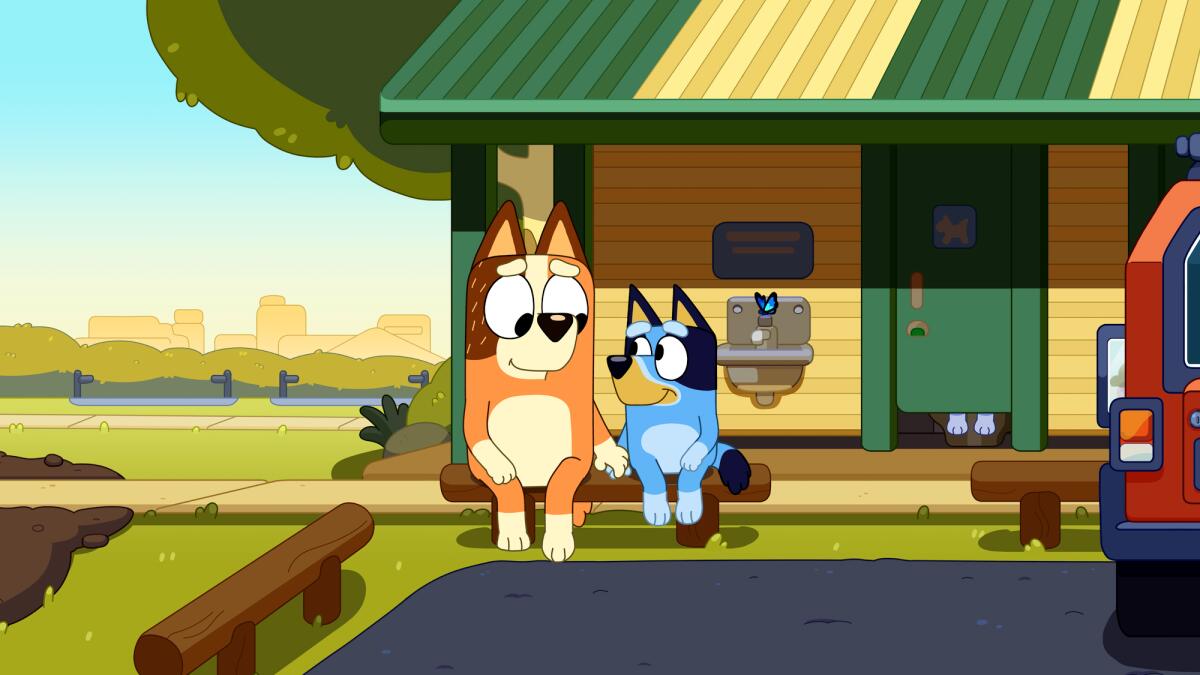
Chilli and Bluey in a scene from “The Sign”.
(Ludo Studio)
Throughout the show's three seasons, adult themes like why there is friction between Chilli and her sister Brandy (Rose Byrne, whose cameo in “The Sign” will make viewers so happy) have been seamlessly woven into the plots. But “The Sign,” which also shows Chilli trying to save the wedding when Frisky runs away, gives the adult characters even more time in the spotlight. “When you're used to the seven-minute format, there's not much you can play with and attack at the same time,” Zanettti says. “With this, there's a lot more room for depth and nuance.”
McCormack says the episode lifts the veil on what parents face as they try to be there for their children. “All this happens to people and you don't realize it and people keep it hidden,” he says. “They are also going through difficult times and are trying to control it, but everything has gotten out of control.”
“The Sign” also addresses some larger themes, such as the unpredictability of life. “We are always trying to make the right decision. Like everyone is trying to do the right thing. The difference between what we should see as right and what in our guts and hearts we feel is right. “I think there’s a beautiful way to look at that and deal with that in this episode,” Zanetti says.
McCormack adds: “Everyone is trying to make the best decision at the time and you will make mistakes. I think for me that's the underlying feeling of this episode: you just have to try to do the best you can. Sometimes you will be wrong. But you just have to do what you think is right at the time with the information you have, which is a pretty big concept for a kids show.”
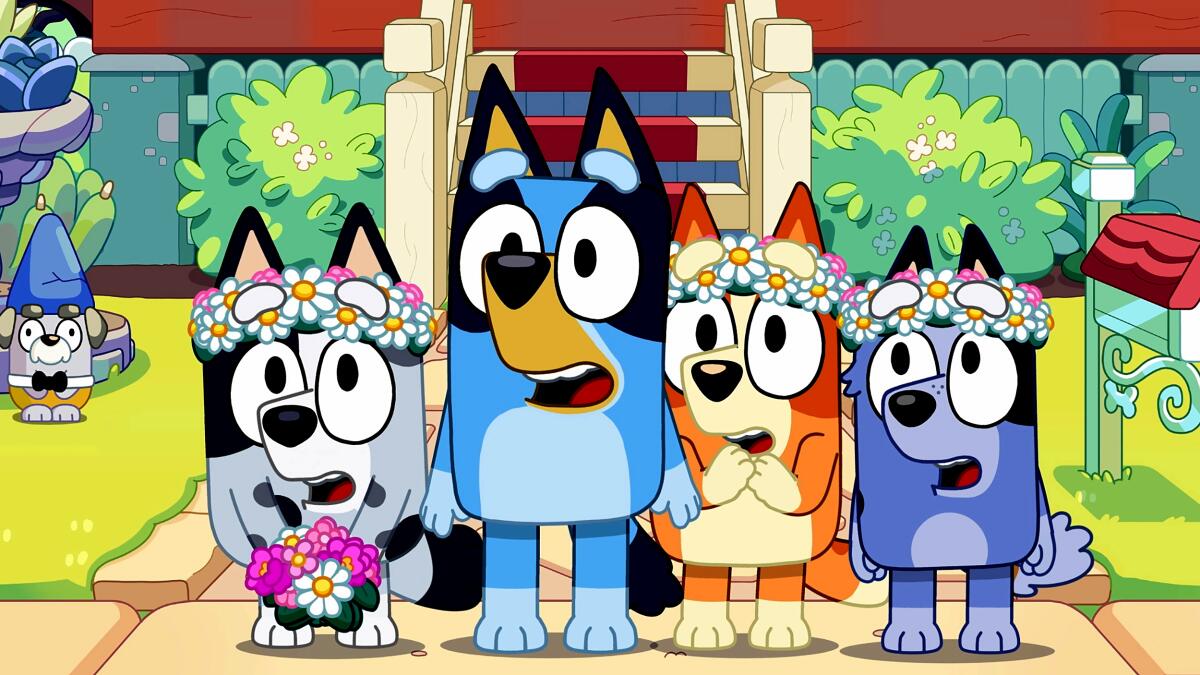
“The Sign” addresses some bigger themes, like the unpredictability of life.
(Ludo Studio)
Does Pearson feel “The Sign” has a larger message?
“I feel like the 'Bluey' episodes are becoming a bit of a Rorschach test,” Pearson says. “It's hard to say what we wanted to say. It is difficult to give it our own meaning. It's always wonderful to receive these letters and emails and meet people on the street whose episodes or characters meant something to them that we perhaps never thought or dreamed of. It’s always lovely to hear the audience come full circle rather than us coming full circle for them.”
Since the show's premiere on Disney Junior in 2019, the series has defied any predictions of success and has become a global phenomenon. It is consistently one of the best shows on streaming. A stage version of the series titled “Bluey's Big Play” debuted in the United States in 2022 and continues to tour. Zanetti and McCormack have been guests on “The Tonight Show” and even made an appearance at Twin Cities Comic Con last year. But that's not necessarily how they measure program success.
“My favorite part is that the program has brought so much, not only joy to people's lives, but also healing,” Zanetti says. “What I didn't expect was for people in their 20s to say, 'I've had a really tough childhood and this show is helping me recover.' Or, 'I didn't think I could have children because I didn't know how to treat them properly since childhood, but now I feel like I can be a mother.' “Things like that are just profound and not expected.”
McCormack and Zanettti, who filmed the show separately, got the episode in two parts, and while filming the first half of the episode, they had no idea how it was going to end. “We didn't have to act like we didn't know what was really going on because we didn't know what was going on,” McCormack says.
“That's never happened before,” Zanetti says. “That was exciting and a little scary.”
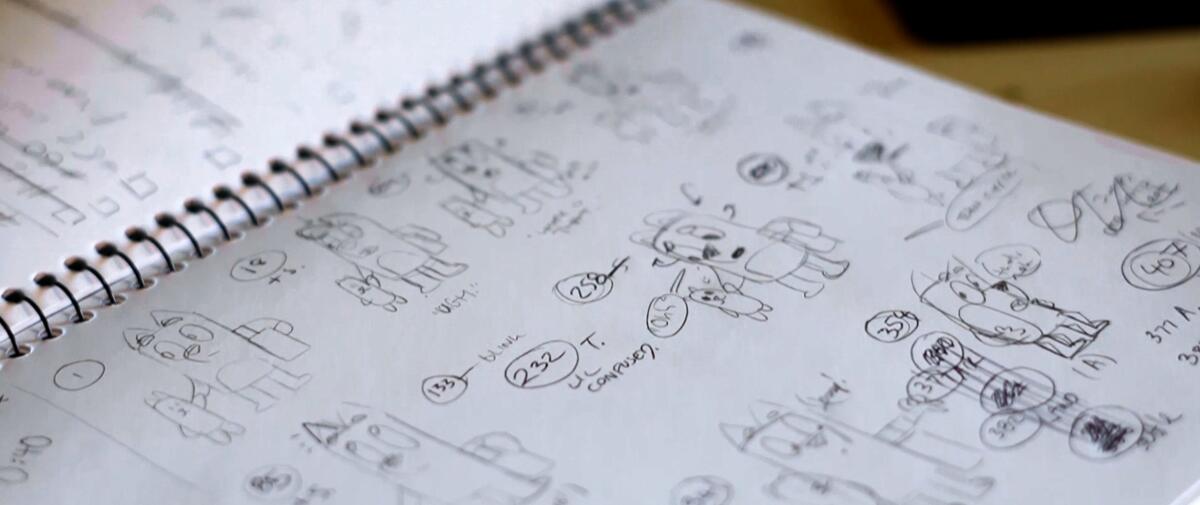
Sketches of the “Bluey” characters.
(Ludo Studio)
Therefore, like viewers, Zanetti and McCormack didn't know if the Heelers would follow through with the move until the last moment. “It was like 'Toy Story 3' when they're about to enter the incinerator and they hold hands and make peace with what's happening,” Zanetti says. “I had one of those moments. I had to give up and at the end I was crying.”
True to his laid-back canine alter ego, McCormack had a quite different reaction. “I was kind of excited about having a new house,” he says. “Part of me was almost like, 'Ooooh, I wonder what this is going to be.'”
Pearson, who says throughout the third season they've hinted that a possible move was the direction the show was headed, says they never seriously considered relocating the family. “I think it would have been a difficult decision to move them. The goal of these characters, and this family, is aspirational, they are the best of all. To move them, it seemed like it would have been a betrayal of the audience. “I think keeping them there will always be that way.”
Now that the show has scaled its own Everest, what's next?
“It was no secret that it was kind of a test to see an audience like 'Bluey' in a longer format. Would a feature film work for 'Bluey'? We don't know yet,” Pearson says. “We will wait until Sunday. We hope people like it, and if they like it, we'd love to think about where it could go next.”

